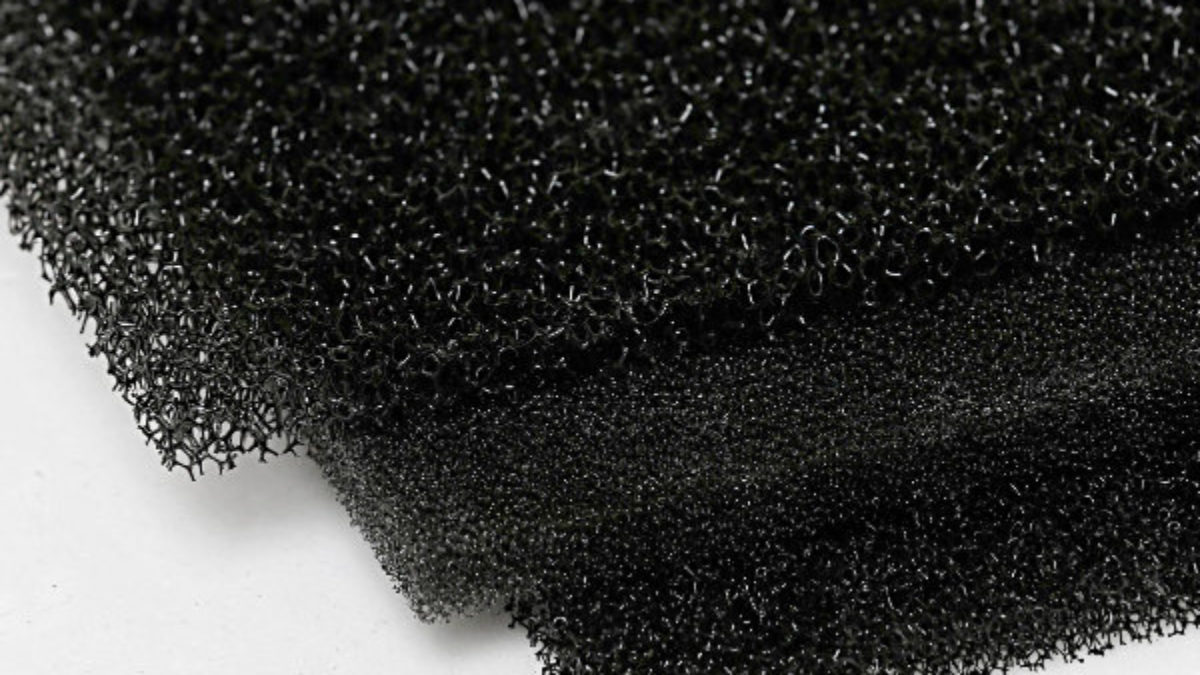Reticulated polyurethane foam is a versatile and widely used type of open cell foam with many applications across multiple industries. When a piece of open cell foam (foam in which the cells are left open to make the material more flexible and softer) goes through the reticulation process, its cell walls are completely removed. This increases the porosity of the foam, making it better at filtering and/or absorbing liquids. Reticulation literally means “structured or arranged like a net,” which is why reticulated foam has a net or lattice-like appearance.
The Benefits of Reticulated Foam
This type of open cell foam is widely chosen by manufacturers because if its various benefits, which include:
- Lightweight: its open cell structure means that it is comprised of a lot of air
- Low odor: it does not off gas or leave strong odors behind
- Anti-microbial: it has a high resistance to mold and mildew, and it will not rot easily
- Chemical resistance: will not easily deteriorate by various chemicals
- High tensile strength: it will not easily break under tension
- Elongation and tear resistance: it can stretch well without tearing
- Affordability: it is not very expensive to make or fabricate
During the manufacturing process, different additives can also be added to reticulated foam to make it more flame retardant, antistatic, static dissipative, among other beneficial properties.
The Applications of Reticulated Foam
Reticulated foam’s many benefits and properties make it a good choice for a variety of applications across multiple industries:
- Filtration: its open cell structure and resistance to mold make it a good use for filters and filtration products. It is often used in small combustible engines (like lawnmowers) air compressors, face masks, vacuum cleaners and dust bags, electrical equipment, and more.
- Sound absorption: while it does not block sound, it can be used for acoustical management because of its ability to absorb sound waves. It is often used to control sound in everything from aircrafts to microwaves, vacuum cleaners, and other industrial equipment.
- Fluid management: used in medical devices, cosmetic applicators, etc.
- Cleaning products: it is widely used in sponges, wipes, rags, scrubbing pads, etc.
Reticulated foam is also used in a variety of everyday products that include paint brushes, powder puffs, blackboard erasers, microphones, windscreens, and many others.
Fabrication of Reticulated Foam
Reticulated foam is very easy to cut, shape, and fabricate into many products. The most important factor to take into consideration when choosing reticulated foam for one of your products is PPI (pores per inch). The porosity of all reticulated foam is measured in PPI, which generally range from 4 PPI up to 100 PPI. The lower the PPI value, the greater amount of airflow that will occur through the material. As the value increases, so does the number of pores that are considered to be in a single inch of the foam. This greatly affects the use for the foam as well as its effectiveness for certain types of filtration, sound absorption, etc.
Reticulated Polyester vs. Reticulated Polyether Foam
There are two main types of reticulated foam based on the PPI of the material: reticulated polyester and reticulated polyether. Reticulated polyester foam has a skeletal structure with many pores arranged in a uniform structure. These pores are filled with closed cells that reflect light and inhibit airflow, making the material ideal for seals.
Reticulated polyether foam has a much more open cell structure, meaning the material is more flexible, easily compressed, and affordable to produce. Its loose cell structure allows for moisture and air to more easily flow through them. This makes the material more ideal for hydrostatic applications because of its ability to resist deterioration due to liquids and moisture. This type of foam is commonly used in medical and sports applications as well as general apparel.
Choose the Right PPI and Thickness
At Amcon Foam, we can help you choose the right PPI and thickness for your reticulated foam based on its use, and we have the design and fabrication expertise to help you shape it. We use cutting-edge technology at our manufacturing facilities to cut reticulated foam into sheets, rolls, or one-of a-kind shapes for specific products or even brand-new prototypes.


